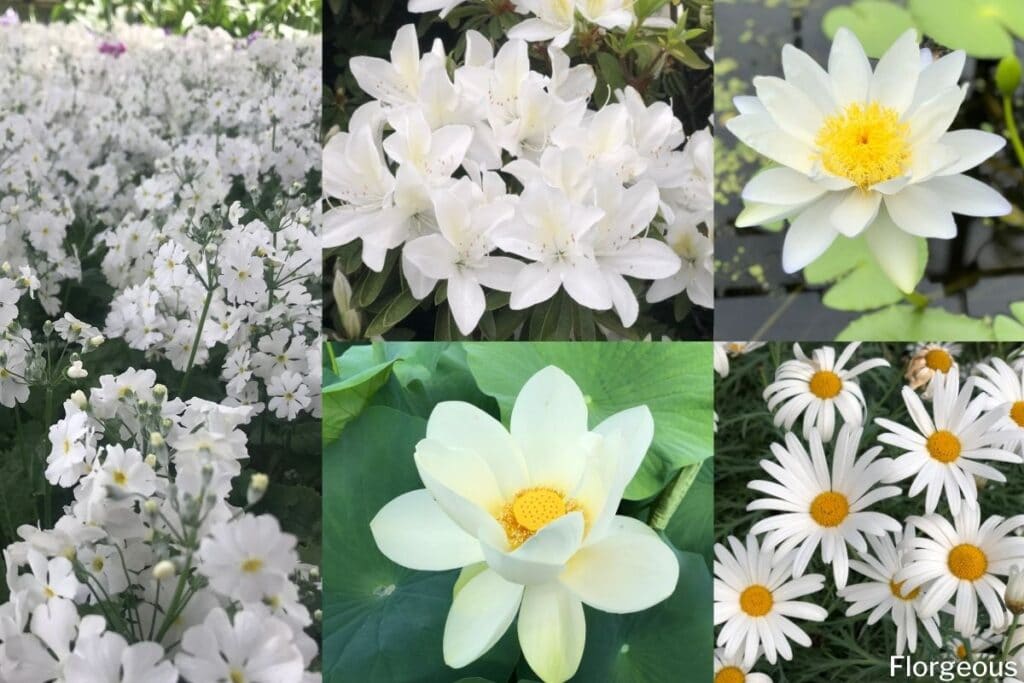White flowers are not only beautiful, but they will brighten up any area. What’s more, white flowers have a natural and ethereal beauty attached to them, and they often evoke feelings of beauty, purity, and wellness.
- Different Types of White Flowering Plants
- Amaryllis
- Anemone
- Alstroemeria
- Begonia
- Baby’s Breath
- Bouvardia
- Camellia
- Calla Lily
- Carnation
- Clematis
- Columbine
- Chrysanthemum
- Corn Marigold
- Cosmos
- Candytuft
- Dictamnus
- Delphinium Centurion
- Daisy
- Daffodils
- Dahlias
- Dendrobium Orchid
- Dogwood
- Easter Lily
- Foxgloves
- Hellebores
- Hyacinth
- Hydrangea Arborescens Incrediball
- Lotus
- Lupine
- Magnolia
- Moonflowers
- Hosta
- Jasmine
- Petunia
- Peony
- Primrose
- Ranunculus
- Rose
- Scabiosa
- Silverbush
- Snow Bunting
- Trumpet Flowers
- Tuberose
- Tulips
- Vinca
- Water Lily
- Walking Iris
- Wisteria
- Wild Chervil
- White Gloria
- Yucca Filamentosa
- Yarrow
- What Other White Flower Options Are There?
- Frequently Asked Questions about White Flowers
During the nighttime, white flowers will shine mainly due to its luminescence; thus, this means they can be seen from afar!
Flowers like lilies, camellias, yucca, and primroses will all be discussed on this list. Continue reading and find out many beautiful white flowers you can grow.
Different Types of White Flowering Plants
Here is a list of white flower names and pictures:
Amaryllis
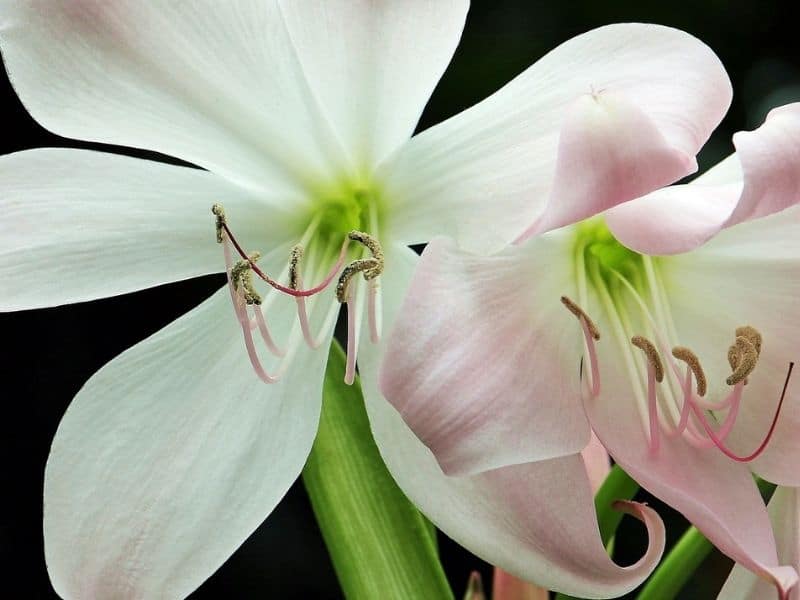
Amaryllis is a bulb plant. They are beautiful and easy to grow. They can reach up to 10 inches in height, and they need plenty of water to thrive. This white flower will grow well in well drained soil and is perfect if you want to attract butterflies.
Ideally, they should be placed in a very hot and sunny spot, as they are drought-tolerant. However, they will not survive cold climate conditions.
Anemone

Anemone flowers are usually referred to as windflowers as well. They are tuberous flowers and will bloom in early spring, but only if the weather is warm enough to allow them to do so. They need to be placed in partial shade. Anemone flowers prefer moist and well-drained soil.
This white flower is one of the most attractive flowering plants you’ll find!
Alstroemeria
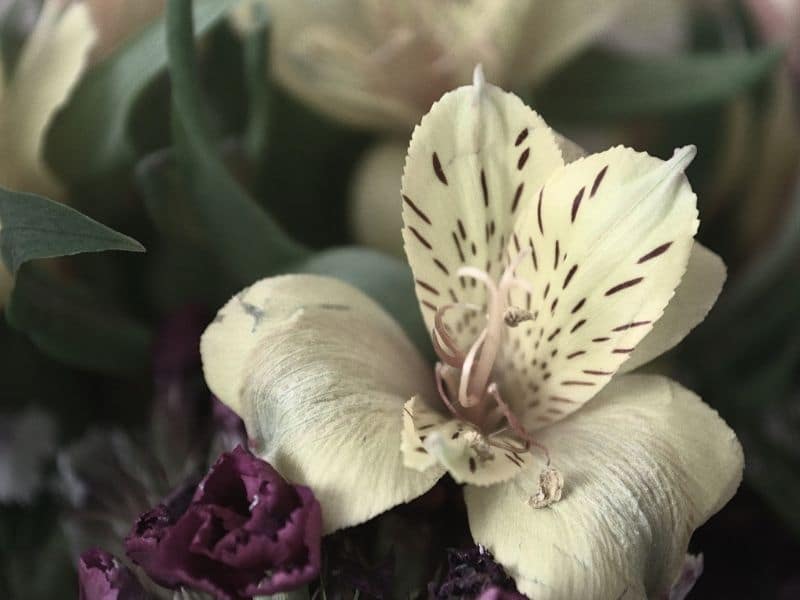
Alstroemeria is sometimes referred to as Peruvian lilies. They are a perennial, bulb plant that will look amazingly well in any garden. These lilies are available in many types of white and thrive in both the Southern and Northern Hemisphere.
They are relatively easy to grow, as they are low maintenance. They do, however, need to be planted in a place where they receive plenty of sunlight.
Begonia

Begonias are one of the most beautiful flowers on this list! This plant usually has double blooms that are very large. They prefer windy climates as they cannot tolerate scorching hot weather.
Plant your begonias in full sun only if you live in a cool climate. You may have to move them out of direct sunlight as you move past late spring and into early summer. Nevertheless, these flowering plants are a beautiful white color that’s sure to take your breath away.
Baby’s Breath

Baby’s breath flowers are scientifically known as Gypsophila. They are used as an ornamental plant, and they tend to be the secondary flower filler for bouquets or any other types of flower arrangements.
Out of all the white flower options you can choose from, these white blossoms are perhaps the most recognizable. The flowers bloom in late spring to early summer, making them a perfect choice for wedding season.
Bouvardia

Bouvardia flowers are easy to identify, thanks to its star shape. They are tubular flowers and can come in a variety of colors; however, white bouvardias are an all-time favorite as ornamental flowers.
This type of flower is native to Central America; although, nowadays it can be found all over the world! This type of white flower is available in several different varieties.
Camellia
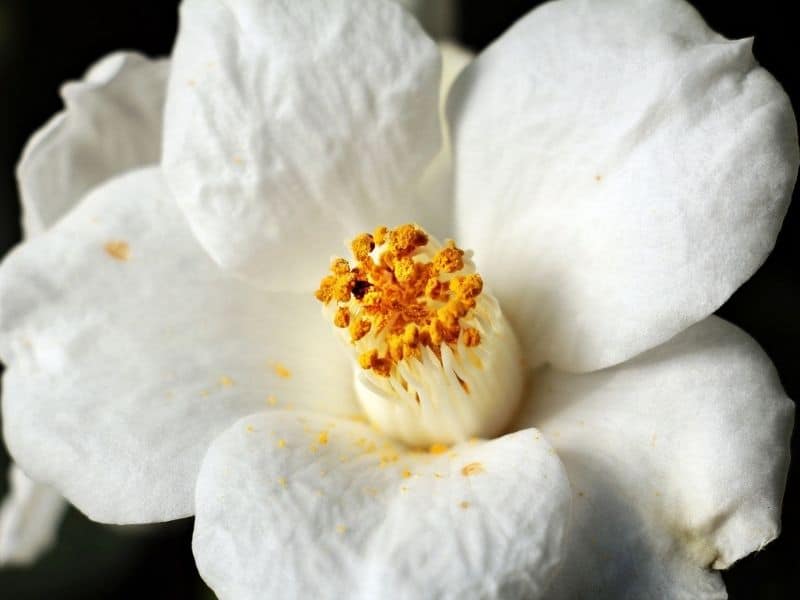
Camellia flowers are also known by its scientific name Camellia japonica. White camellias attract many pollinators, mainly because they have bright yellow centers that can catch their attention easily.
They prefer to be sheltered away from the midday sun, preferably under a partially shaded area. You can give them at least six hours of sun per day, but to ensure they remain the most beautiful white color without any fading, make sure some of the daytime hours are in partial shade.
Calla Lily
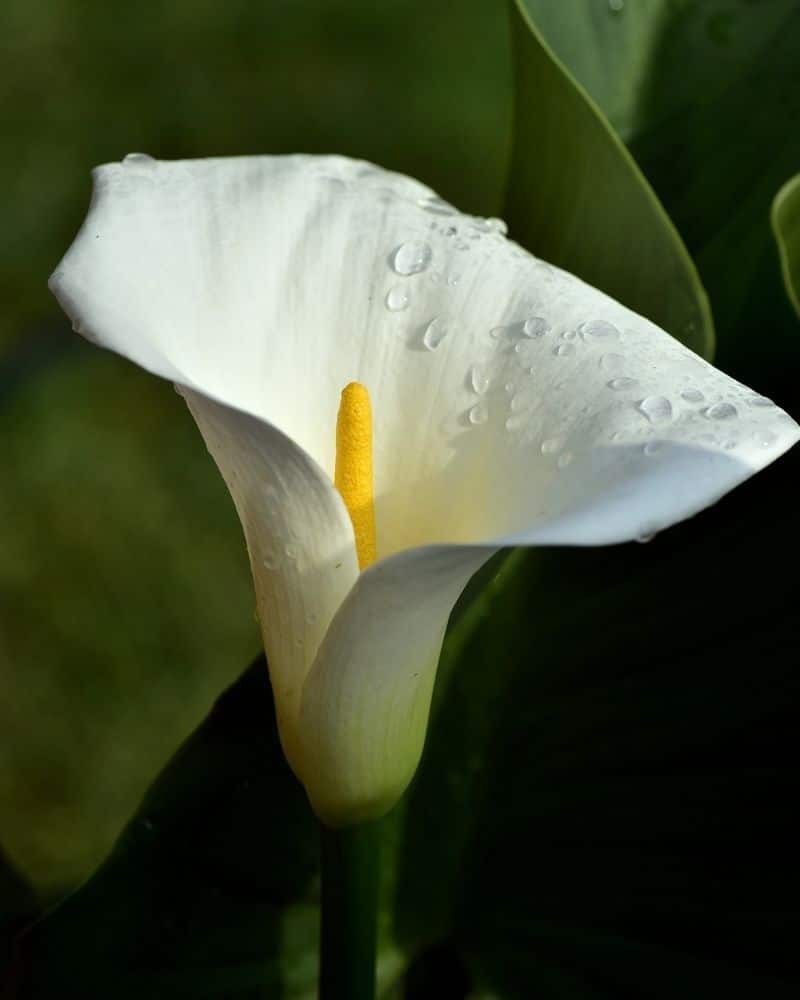
Calla Lilies are also easy to identify because their leaves have a heart-shaped form. They are usually found in ponds as they need plenty of water to thrive. Calla lilies are white flowers that again, need a bit more water than other plants, but still require full sun in order to thrive.
Carnation
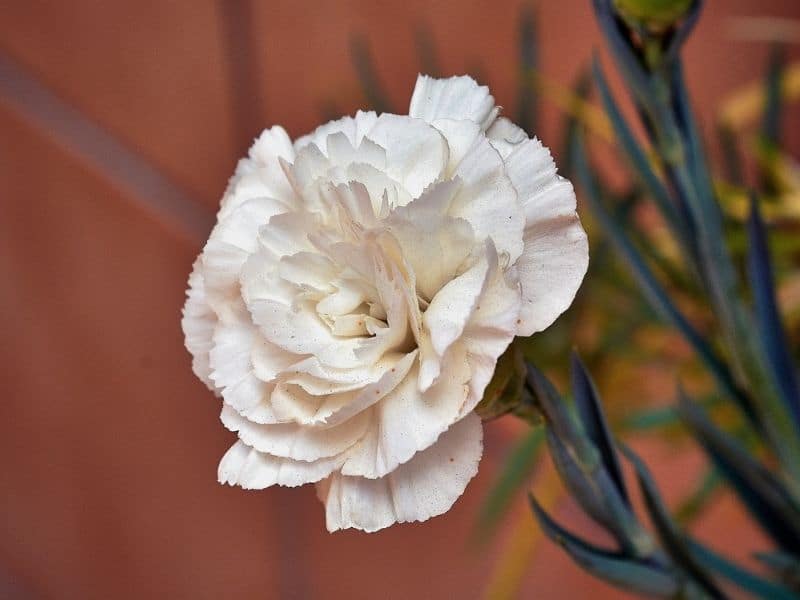
White carnations will catch everyone’s attention! This type of flower is a popular ornamental plant. They need to be placed directly under the sunlight, and they require constant watering.
If you’re looking for a more affordable alternative to the white rose, a white carnation is the way to go. The white blossoms look almost identical, making this the perfect white flower for full sun.
Clematis
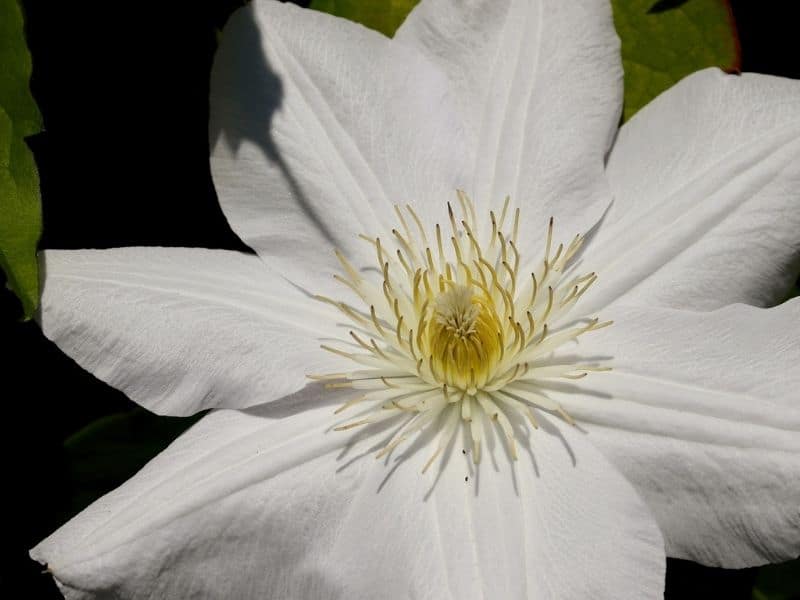
The clematis flowers are one of the most “showy’’ vines in the world! No wonder they represent cleverness! Clematis flowers tend to grow fast, and they will climb and spread out in no time if left unattended.
These flowering plants bloom in the early summer and thrive in full sun.
Columbine
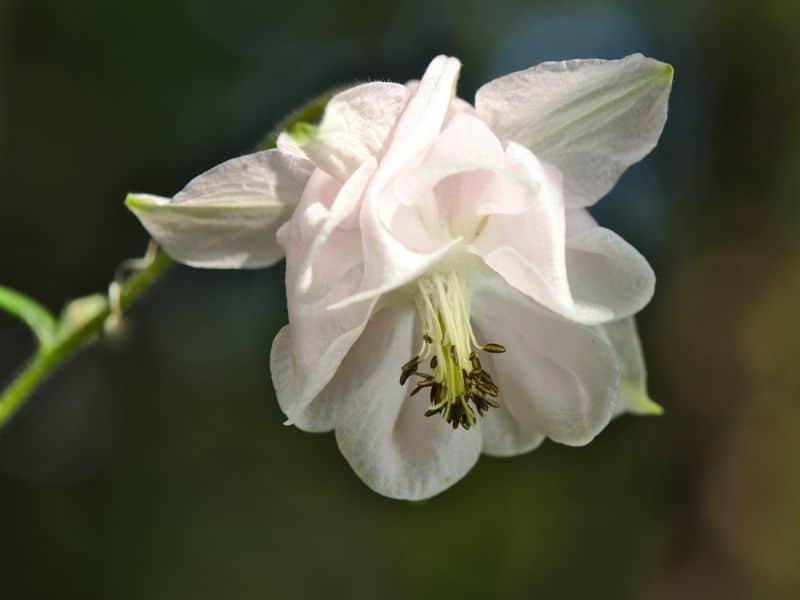
Columbine flowers are scientifically known as Aquilegia. Growing columbines will bring many benefits to any garden; for example, they will welcome many pollinators, such as hummingbirds, who will, in turn, pollinate all of the plants that are available there! Columbine flowers can grow up to 3 feet tall.
This white flower should be at the top of your list!
Chrysanthemum
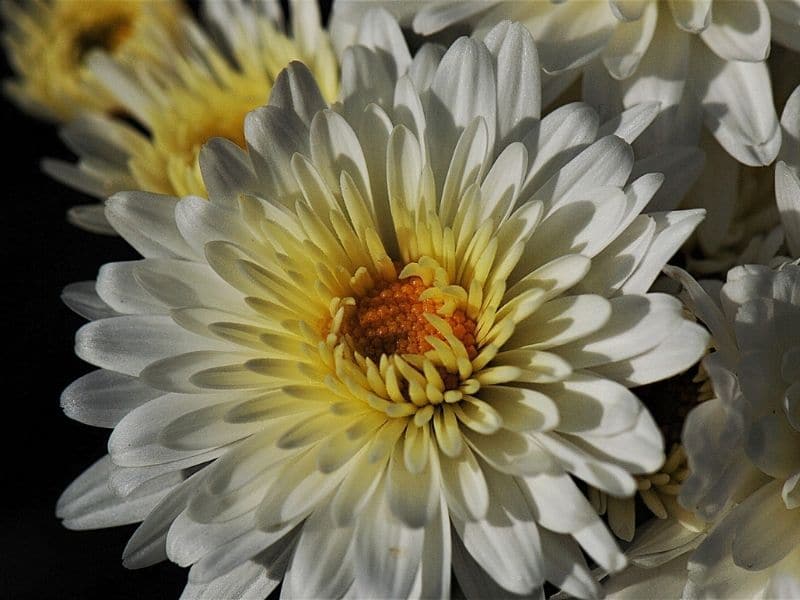
White chrysanthemums are a big flower that resembles a pom-pom! They need to be planted in full sun, and they require well-drained soil to thrive
Corn Marigold
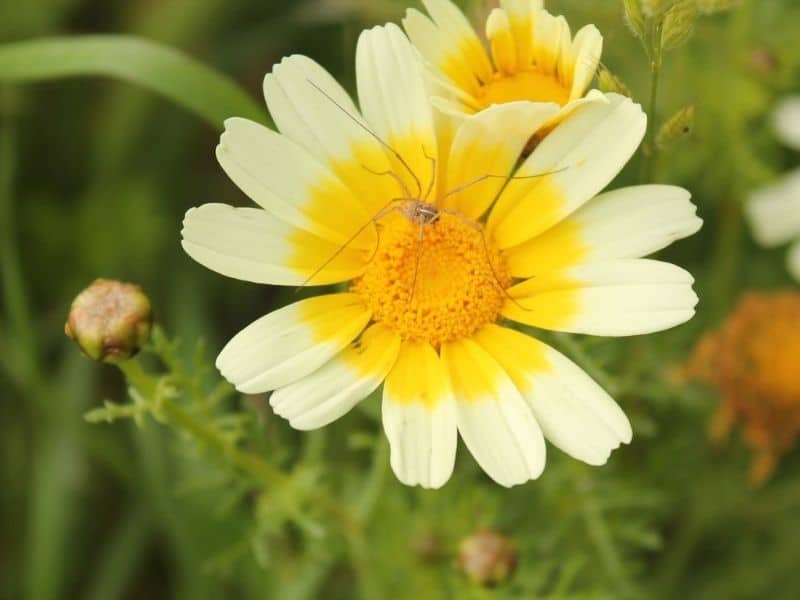
Corn marigolds are scientifically known as Glebionis segetum. Sometimes, they are referred to as corn daisies as well. Although the most common variety is yellow corn marigold, they can also be found in white. This type of flower can grow up to 31 inches in height, and they need to receive full sunlight to thrive.
Though not the most well known white flower, it’s beautiful nonetheless.
Cosmos
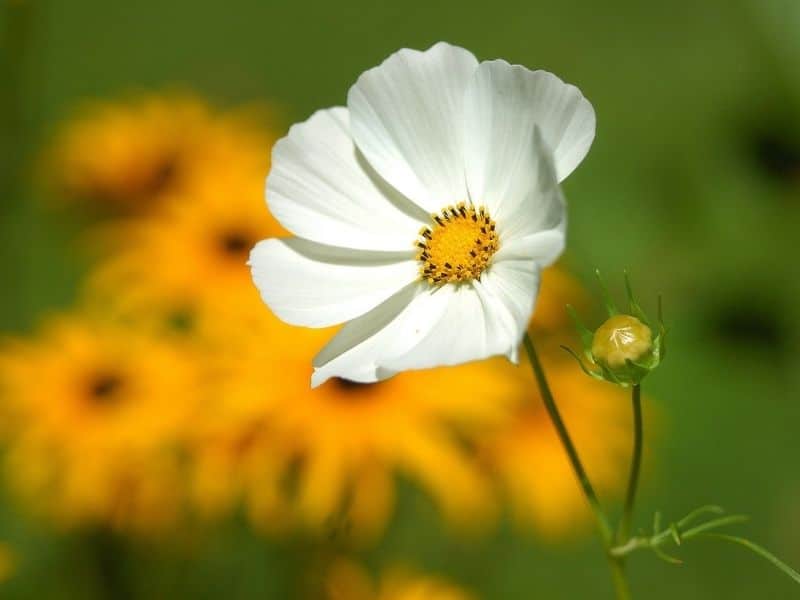
Cosmos flowers can be found next to fences as they will search for support. They can grow up to 30 inches tall (sometimes even more), and they require plenty of sunshine to thrive.
Candytuft
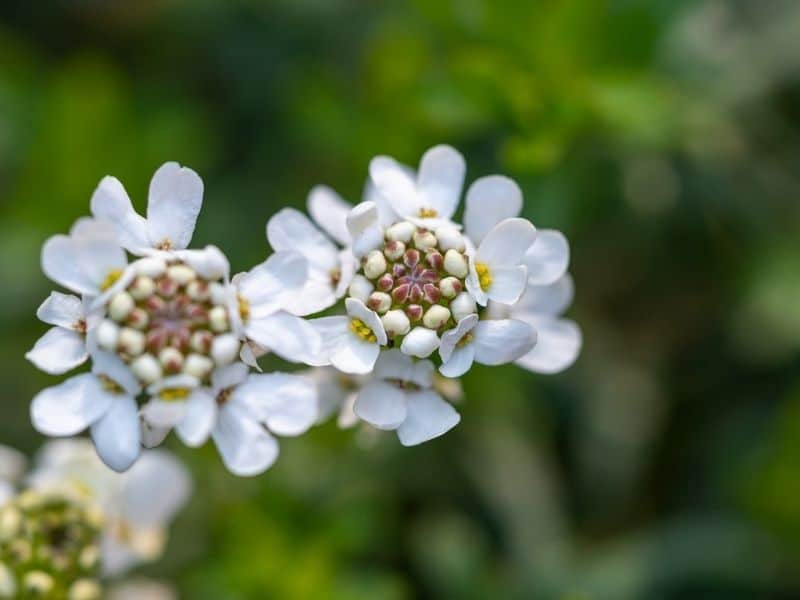
Candytuft is definitely one unique flower! This type of plant is similar to cotton candy, hence its interesting name. They will look great in any garden; however, they are highly poisonous. Candytuft should be placed directly under the full sun.
Read more: Candytuft Companion Plants
Dictamnus

Though the image here is of a Dictamnus in purple, these flowers are also found in shades of white.
Dictamnus is scientifically known as Cytisus x praecox. They are very interesting looking plants! Dictamnus can grow up to 40 inches in height, and they come in a wide range of colors.
These flowers are very delicate, though, which is very ironic considering that the essential oil derived from it can cause a fire if they are in hot climates!
Delphinium Centurion

Finding a delphinium centurion white flower is very rare! This flower can grow quite large, so they will need to be at the back of the garden. Delphiniums require plenty of sunlight to thrive, and they need to be planted at the beginning of fall.
Daisy

Daisies belong to the Asteraceae family of flowers. They are easily recognized worldwide, as these flowers are popular all over the world! Daisies have white petals and a bright yellow center.
They are fairly easy to maintain, they only need well-drained soil and partial shade to thrive. If you’re looking for the most fragrant white flower, then the daisy is a smart choice.
There are several types of daises you can choose from, including Gerbera daisies and the common daisy.
Daffodils
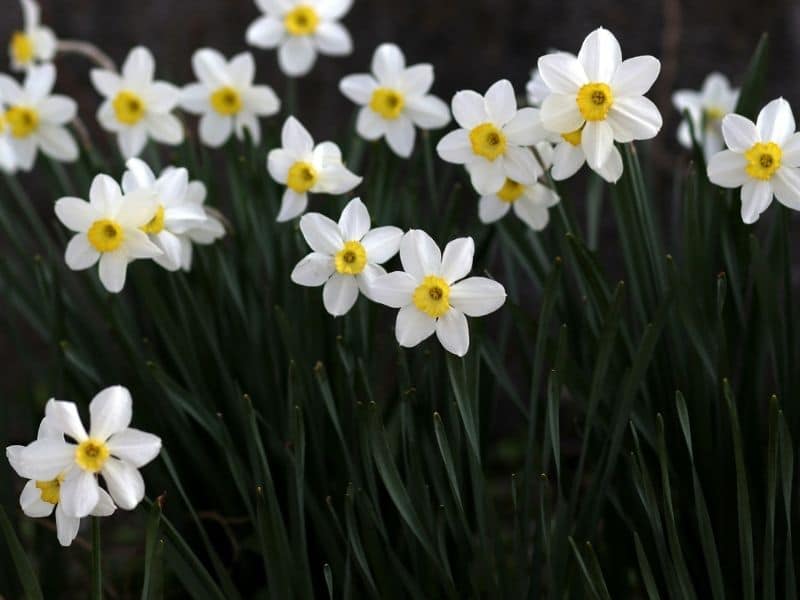
Daffodils are also known as Narcissus. They are unique-looking mainly because they have a trumpet-like yellow center. Daffodils are easy to maintain. They can be found along fences or roads.
This type of flower needs to be planted deep in the soil; otherwise, they will bend and hurt themselves, and they won’t probably grow.
Dahlias
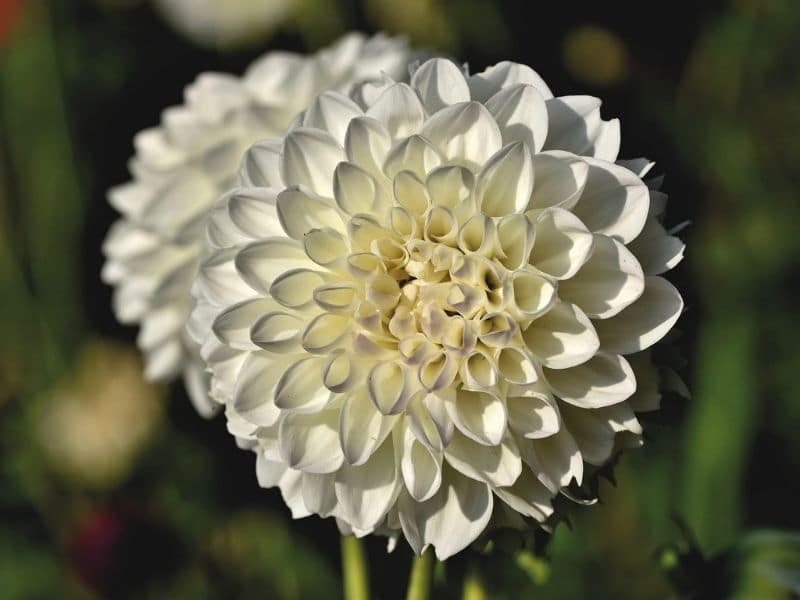
Dahlias have many petals that form a round shape. They can come in different colors and sizes, but the white variety is one of the prettiest ones! Dahlias need well-drained soil and full sun to thrive.
Dendrobium Orchid
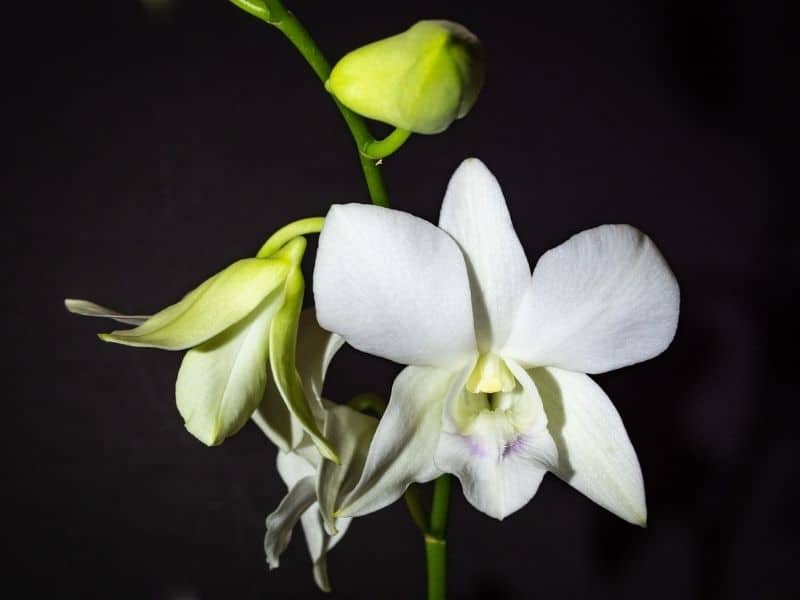
One of the prettiest flowers on this list, Dendrobium Orchid needs well-drained soil and at least 6 hours of indirect sunlight to thrive. They also like to be relatively dry so avoid overwatering them.
Dogwood
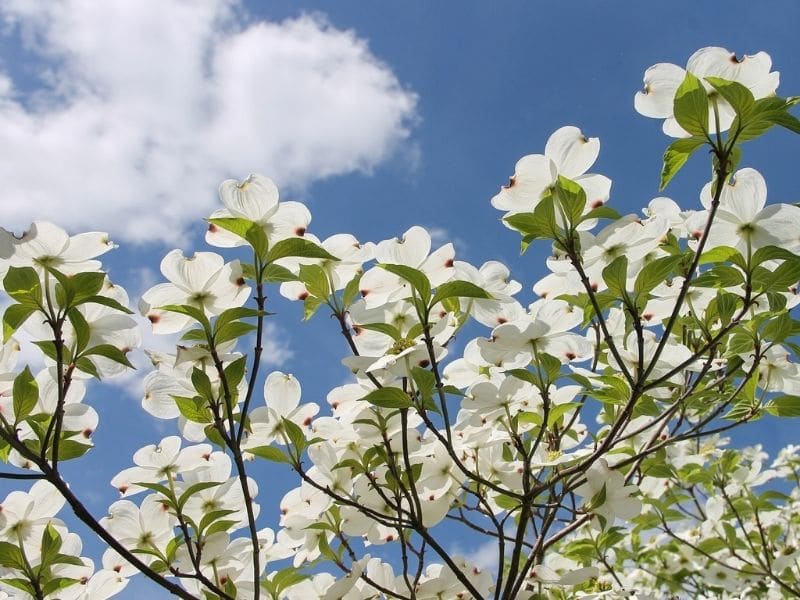
Dogwood flowers are also referred to scientifically as Cornus florida. They are native to the US, but they can be found worldwide. They will bloom throughout spring, although they need constant water and well-drained soil.
Easter Lily
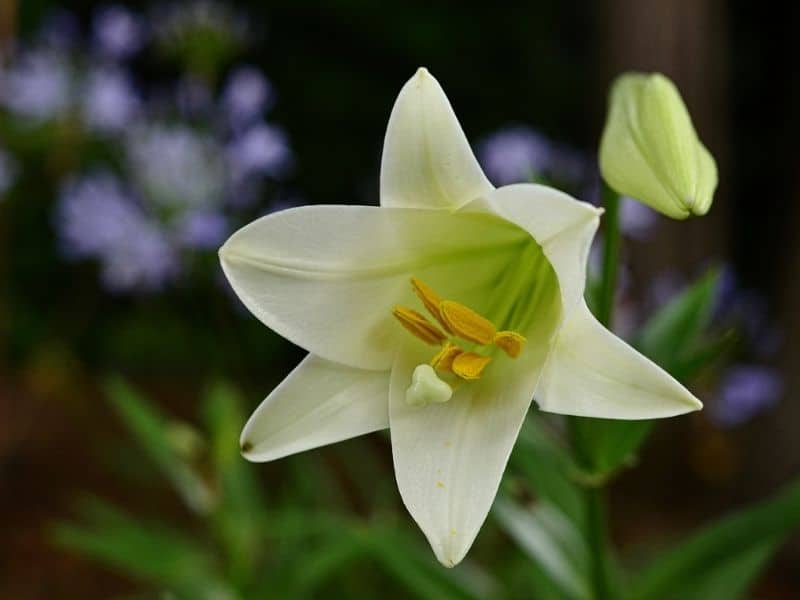
Easter lilies are scientifically referred to as Lilium longiflorum, which is a member of the lilium family. They can grow up to 3 feet in height and are very unique. Even though they are native to Japan and Taiwan, they can also be found in countries such as Brazil or Argentina.
Foxgloves
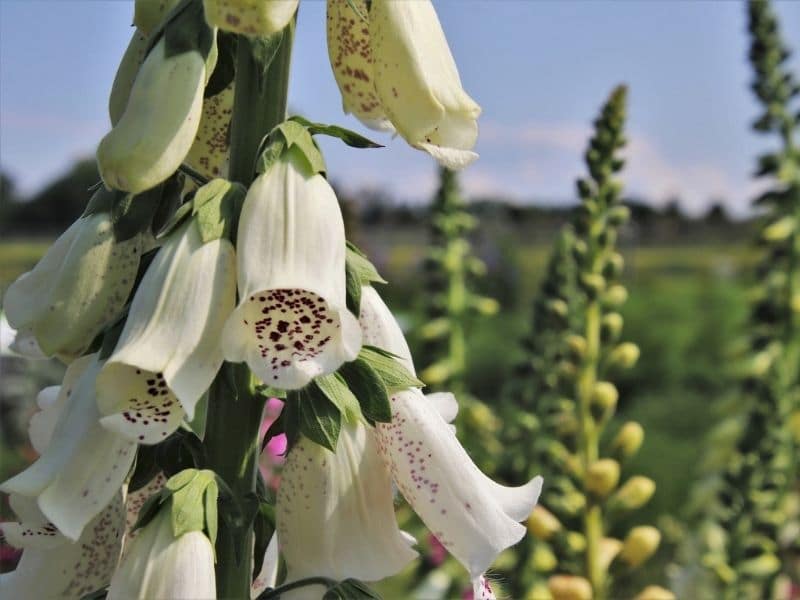
Foxgloves are scientifically known as Digitalis purpurea. They are very dramatic and interesting looking plants, mainly because they have tubular flowers that are upside down. Foxgloves will bloom at the end of the summer, as they need to be exposed to full sun.
Hellebores

This particular hellebore flower is also known as Christmas rose because they will only bloom throughout December and early January. Hellebores can be 20 inches tall when they reach their full length. They will thrive best in colder climates.
Hyacinth

Again, this is a purple hyacinth pictured here, but these flowers can also be found in whit along with other colors.
This type of flower will grow in early spring. Many don’t know this, but hyacinths grow from bulbs. They will, eventually, produce small white flowers.
Hydrangea Arborescens Incrediball

As its name suggests, hydrangea flowers get really close to one another and they form a ‘’ball’’, which is very impressive! These small flowers will attract plenty of pollinators, and they can be placed anywhere in the garden as they will thrive regardless of their location.
Lotus
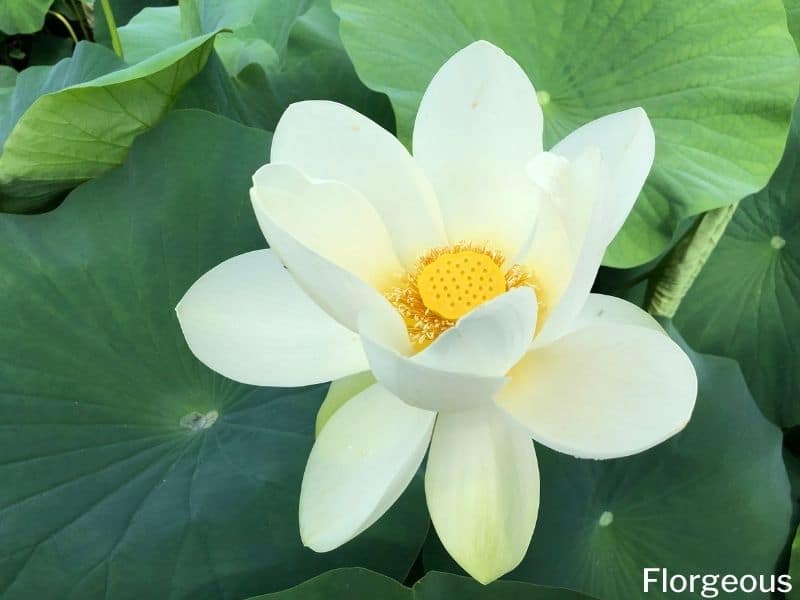
While lotus is an aquatic perennial that is very popular in Asian culture as well as in Buddhism. The lotus plant grows in muddy water but the leaves and blooms are above the water.
Lupine

Lupine flowers, also known as Lupinus, can grow in many different colors, such as white. They resemble the peas’ flowers, but lupine’s foliage tends to be brighter.
Magnolia
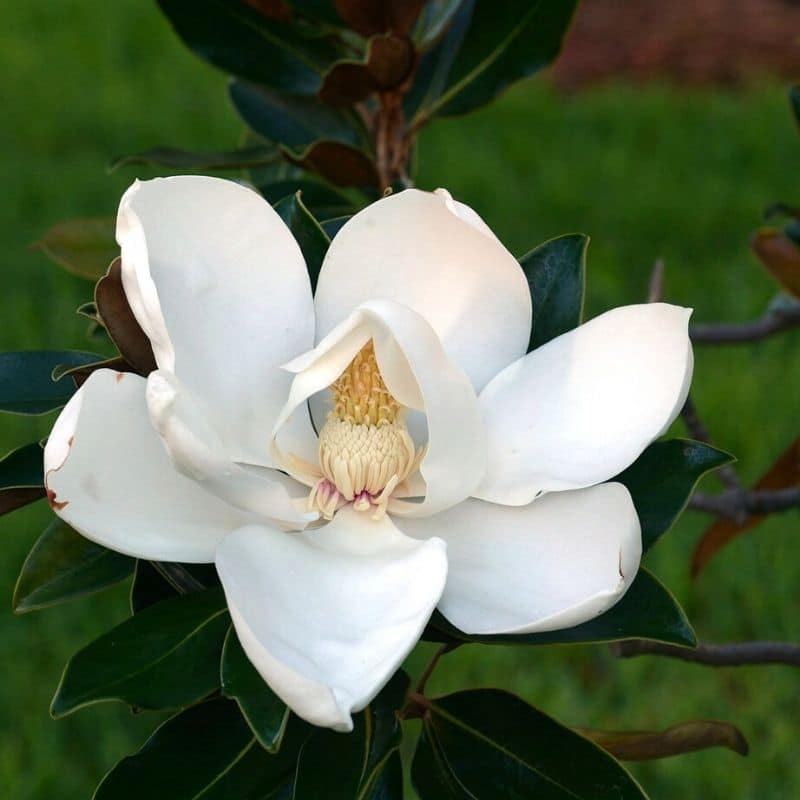
White magnolias are known for their strong fragrance, but also because of their big petals. Magnolia plants need to be sown underneath partial shade; however, this may become a problem once the magnolia tree starts growing, as they can easily reach 70 feet in height.
Moonflowers
Moonflowers will grow in vines; thus, they need to be guided throughout their growing journey. These flowers have large white blooms, and they release a subtle fragrance.
Hosta
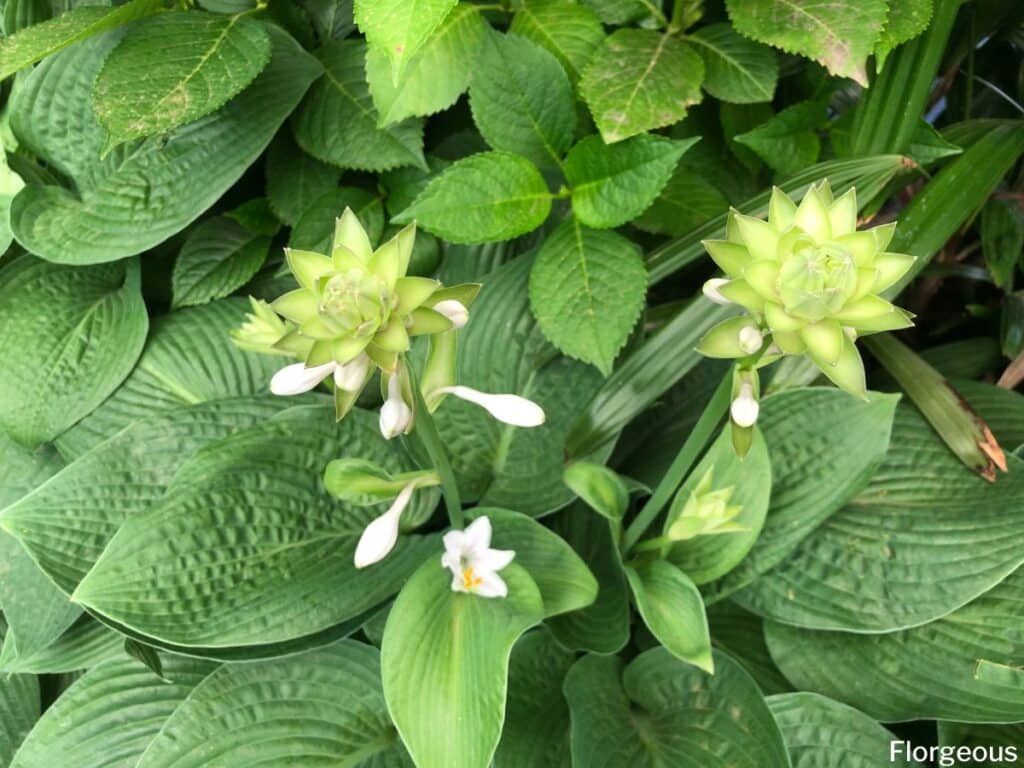
Hosta flowers prefer to be hidden away from the sun. They tend to bloom in the middle of the summer; however, because they are low-lying they are used to being in shaded areas.
Hosta flowers will grow abundantly and easily.
Jasmine

Jasmine flowers are scientifically known as Jasminum. Jasmines will grow on a vine, or they will become a small bush. Jasmine flowers will thrive in tropical areas, although they may thrive in other warmer climates.
Jasmine is known for being a high maintenance vine or bush, mainly since they require many trimmings and guidance throughout their developmental stages.
Petunia

Petunia flowers are now famous for their wide range of colors! Yet, the most traditional variety of petunia’s tends to be white, yellow, and purple petunias, as they can be easily found in many countries.
Petunias will thrive best when placed under full sun. They will, however, need to be protected against strong winds.
Peony
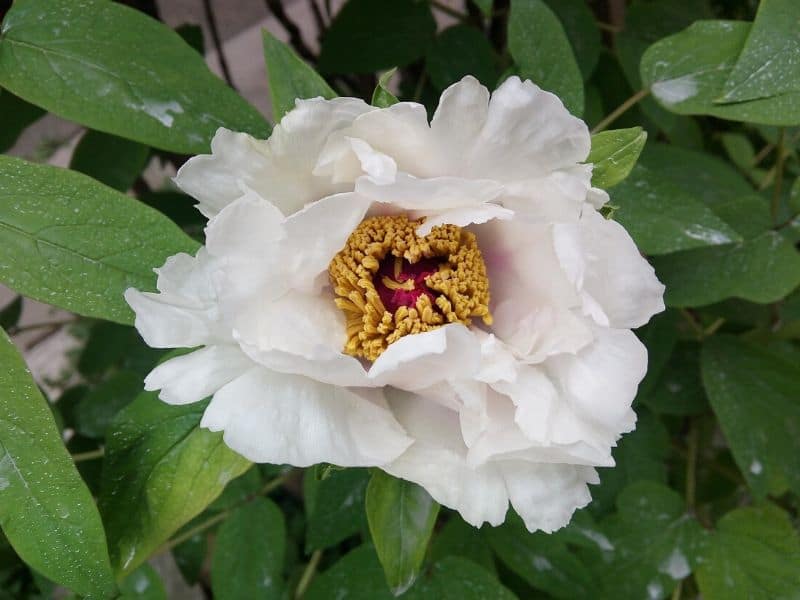
Peony flowers tend to bloom at the end of spring, mainly because they need full sun to thrive. Peony’s green foliage can serve as a low border in an unshaded area.
Most of the peony’s petals are edible, and because they are perennial plants, they will reappear year after year.
Primrose

Primroses are known as Oenothera. They come in a wide range of colors, but white is the favorite of many. They require lots of maintenance, mainly because of their fragile petals and foliage.
Ranunculus
Ranunculus flowers are known for being very beautiful, especially when chosen as ornamental plants. This type of plant has many blooms, and they will last long enough in a vase or container.
Rose
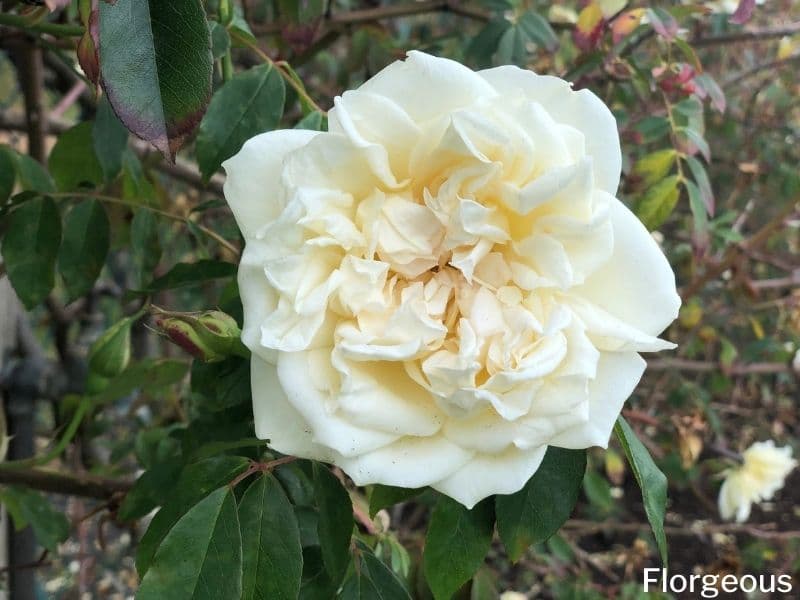
Roses come with many different colors. White roses are often seen in weddings as bridal roses because they often represent purity, innocence, young love and loyalty.
Scabiosa
Also known as pin cushions. Scabiosa plants produce small flowers and stems. They need to be placed together, in groups, alongside many other scabiosa plants, to fill an area.
Silverbush
Silverbush plants are scientifically known as Convolvulus cneorum. The foliage may sometimes look silver, but the flowers tend to be white. They will only bloom during spring and summertime, as they need plenty of sunlight to thrive.
Snow Bunting

Snow bunting flowers are scientifically known as Crocus chrysanthus. They are very hardy and can tolerate cold climates. They do, however, need to be placed underneath a shaded area.
Trumpet Flowers

Trumpet flowers are scientifically known as Datura. They resemble mandrake flowers and nightshade; however, they are very different plants.
As its name suggests, this plant has a trumpet-like shape and is very fragrant throughout their lives. They need regular watering, and they need shaded areas. If you’re looking for a white flower that is a bell shaped flower, the trumpet flower is the way to go.
Tuberose
Tuberose plants are scientifically known as Polianthes tuberosa. They will bloom throughout the night; and they can grow up to 3 feet in height. They are usually grown for their fragrance, which can be very strong and intense.
Tulips

Tulips can be any color, however, white tulips are one of the most elegant and beautiful ones! Tulips have a cup shape that is easily recognized throughout the world. However, growing tulips can prove to be a more challenging task, especially when it comes to watering them, as they need the right amount of water to thrive. Avoid watering tulips directly.
The tulip is perhaps one of the most well-known white flower options you’ll find!
Vinca
Vinca flowers are usually referred to as Periwinkle as well. Vinca tends to be a small flower, albeit a very attractive one! They will thrive best in warm climates, where they can be fully exposed to sunlight.
Water Lily
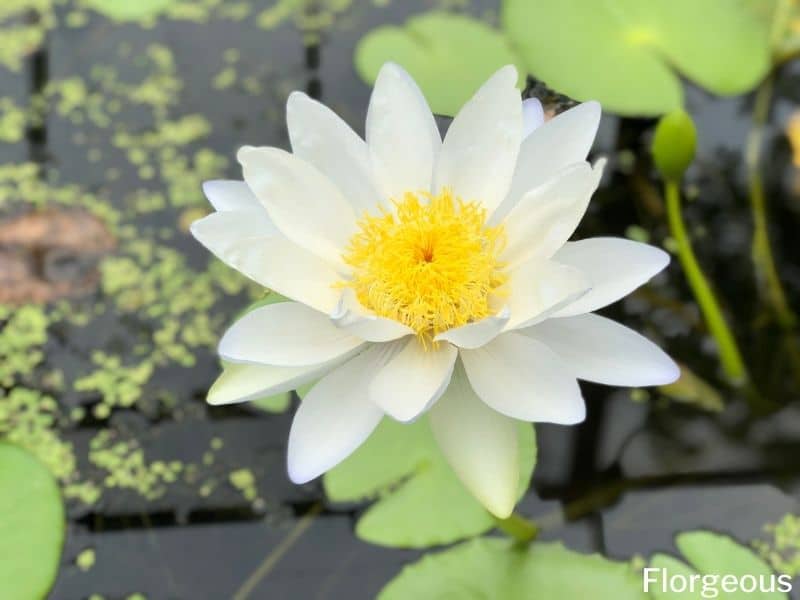
Water lilies are another aquatic plant that blooms in a variety of colors including while, pink, red and yellow. White water lilies are classic and elegant that symbolizes innocence, peace, purity, hope, and rebirth.
Walking Iris
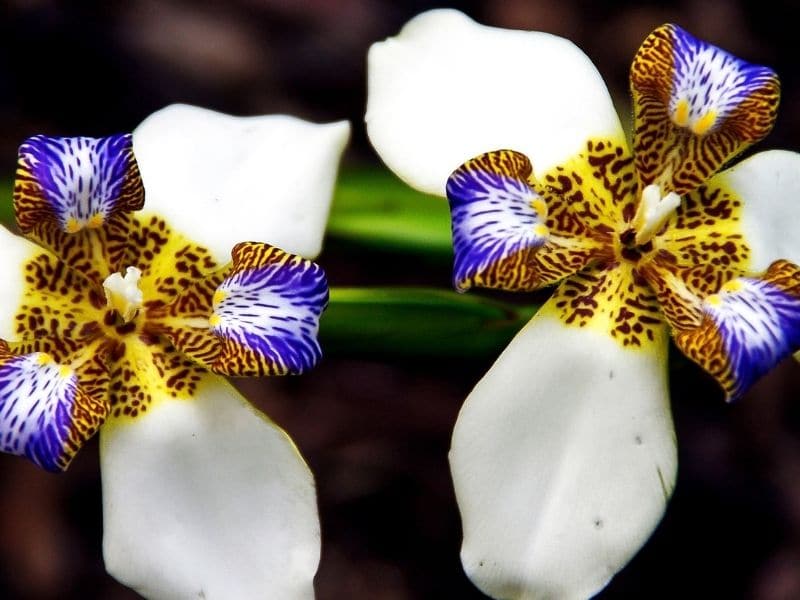
Walking iris plants are scientifically referred to as Neomarica gracilis. Although they have white petals, the center of the plant is usually violet, brown, or blue.
An interesting fact about this particular plant is that the flowers will only bloom for one day! After that, they will disappear, but new and smaller plants will soon emerge to bloom in the future.
Wisteria
Wisteria flowers are scientifically known as Wisteria sinensis. This type of flower is known for having a strong scent, but also for its ability to climb and expand, even in the hardest of places.
Wisteria plants will need to receive full sunlight and well-drained soil. Wisteria flowers need to be pruned repeatedly; otherwise, its petals won’t grow appropriately.
Wild Chervil
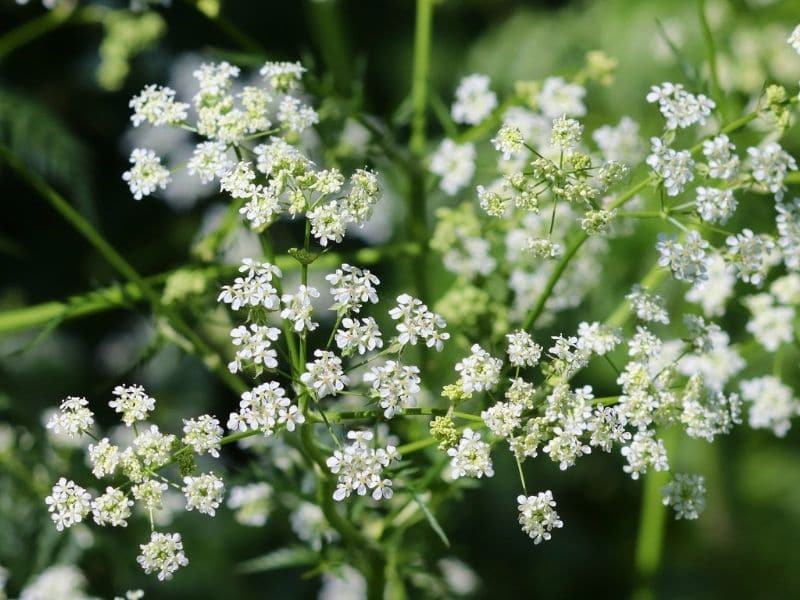
Wild chervil is also scientifically referred to as Anthriscus sylvestris. Some gardeners know this plant by the name of cow parsley. This plant has great texture, and they will surely add a lovely tone to any garden.
White Gloria

White Gloria flowers are known as Astilbes too. They need to be fully exposed to the sun, and they can easily grow up to 30 inches in height. This perennial plant needs fertile soil to thrive.
Yucca Filamentosa
Sometimes referred to as Adam’s Needle, this type of plant will grow almost everywhere, as long as the soil they have is sandy. Yucca filamentosa’s plants are known for being low maintenance; however, the gardener must always wear gloves when working with these plants as they have very sharp leaves that can easily cut.
Yarrow
Also known as Achillea, Yarrow is known for growing tiny blooms and having small petals.
Yarrow needs plenty of space as they spread easily.
What Other White Flower Options Are There?
Of course, if you’re still looking for some cheerful flowers to brighten up your display, there are plenty of other options out there.
Some other white flower options include:
- White Roses
- Lily of the Valley
- Water Hyssop
- Japanese Andromeda (also known by the scientific name Pieris Japonica)
- Sweet Peas
- Sweet Alyssum
- Mock Orange
- Flowering Tobacco
- Queen Anne’s Lace
- Butterfly Bush
- Gerbera Daisy
- White Orchid
Many of these plants require very little maintenance, making it easier than ever for you to create a gorgeous all-white garden.
Frequently Asked Questions about White Flowers
Here are some of the most asked questions about white flowers:
What is The Meaning and Symbolism of White Flower?
Usually, regardless of the culture, white flowers can mean purity, humility, and innocence; hence, why this color is often used in weddings, baptisms, and any other celebration that brings these feelings.
Are white flowers a symbol of death?
In some Asian countries, such as China, Japan, and Korea, white flowers mean death and mourning; hence, why they should never be sent for weddings or any other happy occasion.
Are white flowers unlucky?
This will depend on your culture and way of thinking. Some people will agree that white flowers and plants are unlucky, whereas, others will think they are great as they are a reminder of peaceful and loving things and feelings.
Conclusion

White flowers will bring a lovely pop of color to any garden, but most of them will also provide a delicate fragrance for everyone to enjoy!
White flowers can be perennials, shrubs, or annuals; and if a garden is designed correctly, these plants can be interplanted with one another.
There is something truly magical about white flowers that everybody seems to love. And the best thing about them is that having this color in your garden will make it look elegant and chic, but will also be a pleasant place to be.
For more beautiful flowers, check this A-Z flower list.

